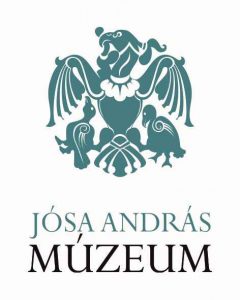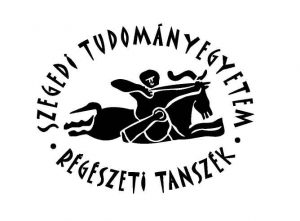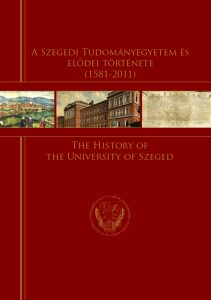Jósa András Museum |
Jósa András Múzeum |
|
| In 1868 physician András Jósa, Baron József Vécses, lord liutenant of Szabolcs county and landlord Dániel Mészáros have conducted excavations on the barrows at Geszteréd, located within the county. They notified Flóris Rómer (1815–1889) a curator of the Hungarian National Museum of the excavation, who proposed establishing a society not merely for finding the relics of the past but organizing them and presenting them to the public. As a result of Rómer’s encouragement, the Szabolcs County Archaeology Association was founded on the 1st of December 1868, with Baron József Vécsey as president, supported by Jósa and Mészáros.
In 1884 András Józsa transferred the Museum from Nagykálló to the new county seat, Nyíregyháza. Finds from two distinct periods constitute the most valuable part of Jósa’s collection. One is the Bronze Age assemblage (mostly treasure troves), the other is the material from the Period of Hungarian Conquest. Naturally, both these collections have been expanded since, and both contain the most widely known artifacts of the Jósa András Museum. Following the death of András Jósa in 1918, the charge of the museum passed first to physician József Dohnál, then in 1925 to ethnographer Lajos Kiss, who was subsequently awarded the Kossuth Prize. The archaeological collection became increasingly prominent and other research areas of the museum began to prosper, thus collections for ethnography, fine arts and applied arts came to be. Since 1918 the museum bears the name of its founder, András Jósa. The turmoils of the wars took a heavy toll upon the museum, its main building was bombed, and Lajos Kiss was substituted by a series of short-term surrogates. Afterwards, Mihály Nyárády, an ethnographer and a former landowner from Kék strived to reorganize the collection in 1949. Following the deprivatisation in 1951 he was charged with managing the institute. Between 1954 and 1972, the museum was led by archaeologist Dezső Csallány. In 1958, he started the still ongoing series of museum annuals titled Yearbook of the Jósa András Museum. Later on, István Dienes became director, followed by Péter Németh (1974–2003), László Dám (2003–2008), János Bene (2008–2017) and Tibor Rémiás (2017‒). During the directorship of D. Csallány and P. Németh the county museum network was established, which bcame one of the most extensive museum complex in the country. The Museum Directorate of Szabolcs-Szatmár-Bereg County supervised almost one and a half hundred buildings in eleven settlements and approximately 10 hectares of natural reserves (the institution was renamed at one point to Museum Directorate of Szabolcs-Szatmár-Bereg County Local Government). Its associate institutions included the Báthori István Museum at Nyírbátor (since 1955), the Rétközi Museum at Kisvárda (since 1961), the Vasvári Pál Museum at Tiszavasvári (since 1963), the Beregi Museum at Vásárosnamény (since 1964), the Vay Castle at Vaja (since 1964), the Museum Village at Sóstó (since 1970), the Szatmári Museum at Mátészalka (since 1974) and the Kállay Collection (since 1993). Furthermore, the museum organization included traditional regional houses and exhibition spaces, such as the Mudrány Mansion at Szabolcs, the Bessenyei Memorial House at Tiszabercel, the Móricz House at Tiszacsécse and the historic Roman Catholic church building at Papos. On the 1st of January 2013, the county network was discontinued. Presently, the central museum at Nyíregyháza, the Museum Village at Sóstó and the Kállay Collection function as a single organization under the alias „Jósa András Museum” operating as a municipal museum with scientific authority over the entire county. The Museum Village is the largest open air ethnographic museum in Hungary, encompassing 7.5 hectares. It was built in the semblance of a late 19th century village with a centre and communal buildings. It presents the ethnographic regions of Szabolcs-Szatmár-Bereg county, including Nyírség, Nyíri Mezőség, Rétköz,, Szatmár, Tiszahát at Bereg as well as an Árpád Age settlement part. It is open annually from the 1st of April to the 31st of October. The Kállay Collection was founded through a donation by Kristóf Kállay, dr. (1916–2006), encompassing a library of more than ten thousand volumes, alongside photographs and documents of contemporary significance. Since 2020, it is on display in the imposing Kállay Mansion with renewed exhibitions. |
1868-ban a Szabolcs megyei Geszteréden Jósa András orvos, báró Vécsey József a vármegye főispánja és Mészáros Dániel földbirtokos kunhalmokat tárt fel. Az ásatásról értesítették Rómer Flórist (1815–1889), a Nemzeti Múzeum őrét, aki felvetette egy olyan társaság létrehozásának fontosságát, amely nemcsak felkutatja, hanem rendszerezi és elérhetővé teszi a nagyközönség számára a régmúlt emlékeit. Rómer buzdítása eredményeképpen 1868. december 1-én báró Vécsey József elnökletével, Jósa és Mészáros támogatásával megalakult a Szabolcs Vármegyei Régészeti Egylet.
A Múzeumot Jósa András 1884-ben költöztette át Nagykállóról az új megyeközpontba, Nyíregyházára. A Jósa-féle gyűjtemény legértékesebb részét két időszak leletei jelentették. Az egyik a bronzkori kollekció (elsősorban a kincsleletek), a másik a honfoglalás kori anyag. Ezek természetesen azóta is bővültek, s máig a Jósa András Múzeum legismertebb leletei. Jósa András 1918-ban bekövetkezett halála után előbb Dohnál József orvos, majd 1925-ben a későbbi Kossuth-díjas néprajzkutató, Kiss Lajos vette át a stafétabotot. Az egyre markánsabb régészeti gyűjtemény mellett a további múzeumi gyűjtőterületek is gyarapodásnak indultak. Így jött létre a néprajzi, a képző- és iparművészeti, a történeti gyűjtemény. A múzeum 1918 óta viseli alapítója, Jósa András nevét. A nehéz háborús évek (az épületet bombatalálat érte, Kiss Lajost rövid időre kinevezettek helyettesítették) után 1949-től Nyárády Mihály volt kéki földbirtokos, néprajzkutató igyekezett a gyűjteményt rendezni. Az 1951-es államosítás után ő kapott megbízást az ügyvezetésre. 1954 és 1972 között Csallány Dezső régész irányította a múzeum munkáját. 1958-ban ő kezdte kiadni a máig folyamatosan megjelenő A nyíregyházi Jósa András Múzeum Évkönvye sorozatot. Csallány után Dienes István igazgatta az intézményt, majd Németh Péter (1974–2003). Őt Dám László (2003–2008), Bene János (2008–2017), majd Rémiás Tibor (2017‒) követte. Csallány D. és Németh P. alatt kiépült a megyei múzeumi hálózat, mely az ország egyik legnagyobb múzeumi intézményrendszerévé nőtte ki magát. 11 településen csaknem másfélszáz épület, közel 10 hektár védett park gondozását látta el az Szabolcs-Szatmár-Bereg Megyei Múzeumok Igazgatósága (illetve Szabolcs-Szatmár-Bereg Megyei Önkormányzat Múzeumok Igazgatósága). Tagintézmények volt a nyírbátori Báthori István Múzeum (1955-től), a kisvárdai Rétközi Múzeum (1961-től), a tiszavasvári Vasvári Pál Múzeum (1963-tól), a vásárosnaményi Beregi Múzeum (1964-től), a vajai Vay-kastély (1964-től), a sóstói Múzeumfalu (1970-től), a mátészalkai Szatmári Múzeum (1974-től), Kállay Gyűjtemény (1993). E mellett tájházak és bemutató helyek tartoztak a múzeumi szervezethez: a szabolcsi Mudrány-kúria, a tiszaberceli Bessenyei Emlékház, a tiszacsécsei Móricz-ház, valamint a paposi Római Katolikus műemlék templom. 2013. január 1-ével a megyei hálózat megszűnt. Jósa András Múzeum néven jelenleg a központi nyíregyházi múzeum, a sóstói Múzeumfalu és a Kállay Gyűjtemény maradt egy szervezet része mint megyei hatókörű városi múzeum. A 7,5 hektáros Múzeumfalu Magyarország legnagyobb regionális szabadtéri néprajzi múzeuma, egy XIX. század végi falu mintájára épült ki faluközponttal, közösségi épületekkel. Bemutatja a Szabolcs-Szatmár-Bereg megye néprajzi tájegységeit (Nyírség, Nyíri Mezőség, Rétköz, Szatmár, beregi Tiszahát), illetve egy Árpád-kori falurészletet. Minden év április 1-e és október 31-e között tart nyitva. A Kállay Gyűjtemény dr. Kállay Kristóf (1916–2006) donációja révén jött létre; tízezer kötetes könyvtárat, kortörténeti értékű fotókat, dokumentumokat foglal magába. 2020-tól a felújított Kállay-ház impozáns épületében, megújult kiállításokkal várja a látogatókat. |
Bibliography / Irodalom
Almássy Katalin – Istvánovits Eszter: Múzeumtörténet. In: Múzsák kertje, A magyar múzeumok születése. Budapest 2002, 157–160.
Bóna István: Dienes István (1929–1995). A nyíregyházi Jósa András Múzeum Évkönyve 37 –38 (1997), 11–28.
Csallány Dezső: A száz év méltatása. A nyíregyházi Jósa András Múzeum Évkönyve 11. 1968. 7–11.
Kiss Lajos: A Szabolcs Vármegyei Múzeum története 1868–1918. [Múzeumtörténeti Sorozat 2.] 1965.
Korek József: Emlékeimből (Szabolcs-Szatmár megye, 1975) A nyíregyházi Jósa András Múzeum Évkönyve 48 (2006), 481–487.
Németh Péter: Csallány Dezső, a múzeumigazgató. A nyíregyházi Jósa András Múzeum Évkönyve 45 (2003) 11–16.
University of Szeged, Faculty of Humanities and Social Sciences, Department of Archaeology |
Szegedi Tudományegyetem Bölcsészet- és Társadalomtudományi Kar
|
|
| In the wake the Treaty of Trianon in 1920, the Franz Joseph University that was founded in Kolozsvár / Cluj in 1872, was removed to Szeged, including its archaeology department. In 1921, the institution existed in name only, actual work began only with the arrival of Árpád Buday to Szeged. The archaeological education was closely linked to the institution founded by Béla Pósta. A cornerstone of this collaboration was Árpád Buday, a former student of Pósta, who reorganized department of archaeology at Szeged as its first head. Buday was an archaeologist of the Roman Age, thus the archaeological remains of the Great Hungarian Plain were not his main interest, and he considered it his main task, to lay the necessary financial and infrastructural groundwork for the institution to function properly. He defined three fundamental tasks for the institute of Szeged: active participation in the education of teachers and the dissemination of information, training archaeologists and museum professionals with both theoretical and practical competence and conducting scientific research on the southern part of the Great Plains. Buday followed in his master’s footsteps and continued several aspects of the work Pósta began, carrying on his ideas and methods in teaching and leading his department. Following the example set at Kolozsvár / Cluj, he launched a series of the institution titled „Essays from the Archaeological Institute of the Hungarian Royal Franz Joseph University”. The reformed archaeology institute was lodged on the third floor of the former Central Bureau of Accounting for the Hungarian Railways.
By the end of the 1930s, Árpád Buday and his colleague, János Banner created an institution that was exceptional even by European standards. Following the death of Buday, Banner (1937–1946) became head of the department. Systematic fieldwork constituted his fundamental concept concerning archaeological research. He was the first to implement it in Hungary between 1927 and 1944 in the framework of the Institute of Archaeology at Szeged. Under his guidance, the department conducted a series of professional excavations in the vicinity of Hódmezővásárhely. Each year they systematically surveyed predefined areas and excavated sites (such as Hódmezővásárhely–Kökénydomb) that became scientific cornerstones not just on a regional level but concerning archaeological issues over the entire Carpathian Basin. Banner is also noted for his work in organizing scientific research, hallmarked by the fact, that the first volume of the archaeological bibliography of the Middle Danube Region was published at Szeged. Following the Second World War, the colleagues of the institution left Szeged and many of them settled in Budapest, including the leader of archaeological education and research, János Banner himself, who became head of the Institute of Prehistory at the University of Budapest. He was succeeded by Márton Roska, also a denizen of Kolozsvár / Cluj, who focused mainly on archaeological instruction during his short time in office. However, in 1949, he was sentenced in a show trial and was removed from the university. In the early 1950s the institute at Szeged was abolished, although the education of archaeology did not cease in the city. Samu Szádeczky-Kardoss continued holding lectures in the field of archaeology at the Department of Ancient History. Systematic archaeological training restarted between 1962 and 1968, under the supervision of Gyula Gazdapusztai. From 1965 onwards, Ottó Trogmayer, an associate of the Museum of Szeged collaborated in archaeological education. Following the tragic early demise of Gyula Gazdapusztai in 1968, Ottó Trogmayer took over archaeological training and its coordination. It was Ottó Trogmayer who brought to life the “Szegedian school” of archaeological training. Alongside theoretical education, he placed emphasis on field expertise. His main directive was to train professionals, who were at home in the research of all archaeological era and could fulfil the complex tasks necessitated at regional museums. In 1989, it became an independent department with Ottó Trogmayer (1989–1997) as its head. During this period until 2003, students at the University of Szeged could take up archaeology as major with a „B” type admission. During the leadership of István Fodor (1997–2008), archaeology became a fully recognized university major with an „A” type admission in 2003. The so-called accredited Bachelor (BA) training began in 2006, in the disciplines of Prehistory, Barbaricum and Migration Period and Medieval archaeology. Master (MA) training began in our department in 2010, while László Révész (2008–) was head of the department. Students can choose from the following disciplines: Archaeometry, Barbaricum and Migration Period archaeology, Medieval archaeology, and Prehistoric archaeology. In 2015, the palette of the Doctoral School of Historic Sciences was expanded with a doctoral programme in archaeology. The last few years saw considerable infrastructural changes at our department. In 2009, the Faculty of Humanities renovated some basement rooms in the campus building on Egyetem Street, providing spaces for cleaning, processing, inventorying, and storing archaeological finds. In January 2015, our department was transferred from the third floor of the former Central Bureau of Accounting for the Hungarian Railways to the first floor, to a more spacious area. So far, our department published eight volumes in its series titled “Monographs of the Department of Archaeology of the University of Szeged” since 2011. We have launched an ongoing periodical titled Acta Iuvenum Sectio Archaeologica, which provides a publication venue for talented students, who participated in the National Scientific Student Conference (Hungarian: Országos Tudományos Diákköri Konferencia – OTDK). |
A trianoni békeszerződés követően, az 1872-ben alapított kolozsvári Ferenc József Tudományegyetem Szegedre költözésekor a régészeti intézet is áttelepült az alföldi városba. 1921-ben azonban még csak nevében létezett az intézet, tényleges működése Buday Árpád Szegedre érkezésével kezdődött. A szegedi régészeti oktatás szoros szálakkal kötődött a Pósta Béla által létrehozott intézményhez. Ennek záloga Pósta egykori tanítványa, Buday Árpád volt, aki a szegedi intézmény első tanszékvezetőjeként szervezte újjá a tanszéket. A római koros régész Buday érdeklődésétől az Alföld régészeti emlékei eléggé távol álltak, ezért elsődleges feladatának azt tekintette, hogy előteremtse az intézet munkájához szükséges anyagi és infrastrukturális hátteret. A szegedi intézetnek három fő alapfeladatát határozta meg: a tanárképzésben és az ismeretterjesztésben való aktív részvétel, elméleti és gyakorlati ismeretekkel egyaránt felvértezett régészek, muzeológusok képzése, valamint tudományos kutatások végzése a Dél-Alföldön. Buday több szempontból is egykori mestere nyomdokaiba lépett, számos ponton folytatta Pósta megkezdett munkáját, több tekintetben átvette oktatói és intézetvezetői vívmányait, módszereit. Ugyancsak kolozsvári mintára indította el az intézet folyóiratát Dolgozatok a Magyar Királyi Ferencz József Tudományegyetem Archaeologiai Intézetéből címmel. Az újjáalakult régészeti intézet az egykori Magyarországi Vasúti Központi Leszámító Hivatal épületének harmadik emeletén kapott helyet.
Buday Árpád és munkatársa, Banner János az 1930-as évek végére egy európai szinten is kiemelkedő intézményt hoztak létre. Buday Árpád halála után Buday munkatársa, Banner János (1937–1946) lett az intézet vezetője. Banner régészeti kutatásainak alapvető koncepciója a tervszerű tájkutatás volt, amelyet 1927 és 1944 között elsőként valósított meg hazánkban a szegedi Régiségtudományi Intézetben. Vezetésével sorozatos, szakszerű tanszéki ásatások folytak Hódmezővásárhely határában. Évente szisztematikusan átkutattak egy-egy területet, ezeken olyan lelőhelyeket tártak fel (például Hódmezővásárhely–Kökénydomb), amelyek alapvető forrásanyagokat produkáltak nemcsak a térség, hanem az egész Kárpát-medence régészeti problémáinak tisztázásához. Banner emellett jelentős tudományszervezői munkát is végzett, még Szegeden jelent meg a Közép-Duna-medence régészeti bibliográfiája című munkájának első kötete. A második világháborút követően az intézet munkatársai elhagyták Szegedet, és többségük Budapesten helyezkedett el, köztük a szegedi régészeti oktatás és kutatás vezéregyénisége, Banner János, aki a pesti egyetem ősrégészeti intézetének lett a vezetője. A stafétát nagyon rövid időre a szintén Kolozsvárról származó Roska Márton vette át, aki elsősorban az régészet oktatására fókuszált. 1949-ben azonban koncepciós perben elítélték, és eltávolították az egyetemről. Az 1950-es évek elején megszüntették a szegedi intézetet, ennek ellenére a régészeti oktatás nem állt meg Szegeden. Az Ókortörténeti Tanszéken Szádeczky-Kardoss Samu tartott továbbra is régészeti tárgyú előadásokat. 1962 és 1968 között Gazdapusztai Gyula vezetésével újraindult a szisztematikus régészeti oktatás, melybe 1965-től a szegedi múzeum munkatársa, Trogmayer Ottó is bekapcsolódott. Gazdapusztai Gyula 1968-as korai tragikus halálát követően Trogmayer Ottó vette át a régészeti oktatást és annak szervezését.. 2010-től, Révész László tanszékvezetősége alatt (2008–), elindult a mesterképzés (MA) is a tanszékünkön, ahol archaeometria, Barbaricum és népvándorlás kori régészet, középkori régészet és őskori régészet szakirányok közül választhatnak a hallgatók. 2015-től pedig a szegedi Történelemtudományi Doktori Iskola képzési palettája a régészet doktori programmal bővült. Az utóbbi néhány évben tanszékünk infrastrukturális szempontból is jelentős változásokon ment át. 2009-ben a bölcsészkar Egyetem utcai épülete pincehelyiségeinek egy részét alakították át, ahol a régészeti leletek tisztítására, feldolgozására, leltározására, raktározására van lehetőségünk. 2015 januárjában pedig tanszékünk az egykori Vasúti Központi Leszámító Hivatal épületének harmadik emeletéről a földszintre, egy tágasabb, nagyobb alapterületű helyre költözött. Tanszékünk Monográfiák a Szegedi Tudományegyetem Régészeti Tanszékéről sorozatában 2011-től összesen nyolc kötet látott eddig napvilágot. AUSZ Acta Iuvenum Sectio Archaeologica folyóiratunk 2013-tól jelenik meg, melyben a tehetséges, főként OTDK-án résztvevő diákjainknak biztosítunk publikálási lehetőséget e periodika által. |
Conference organizers / A konferencia szervezői: ISTVÁNOVITS Eszter, KULCSÁR Valéria, L. NAGY Márta, PINTÉR-NAGY Katalin



